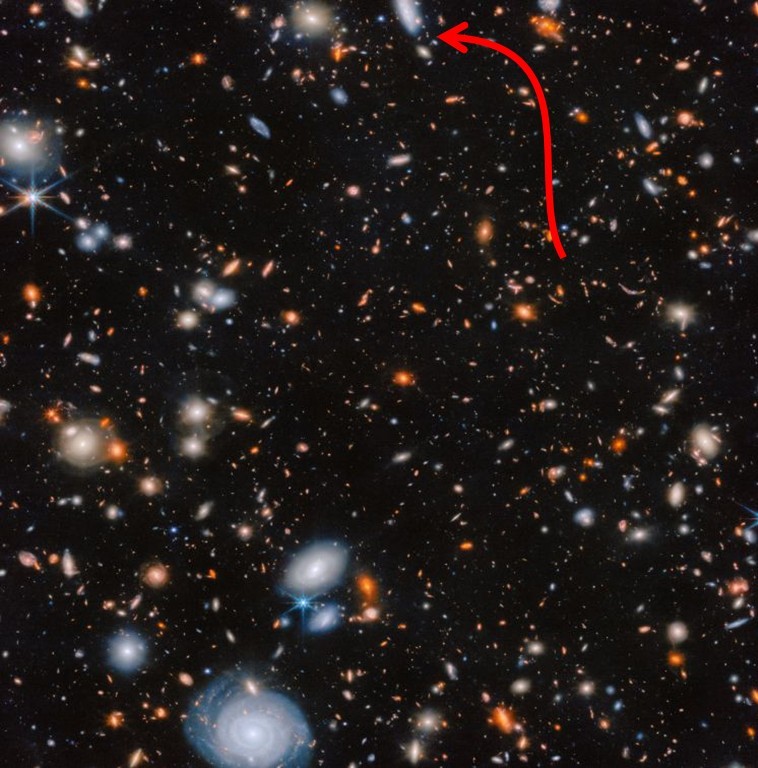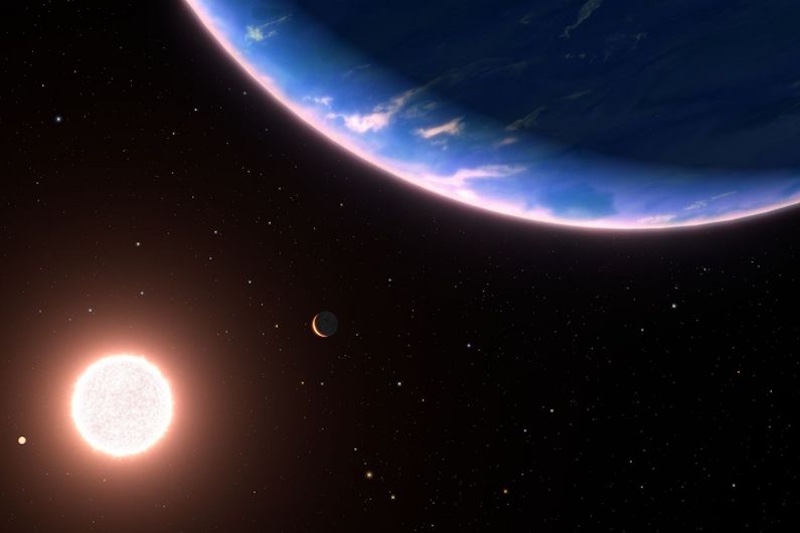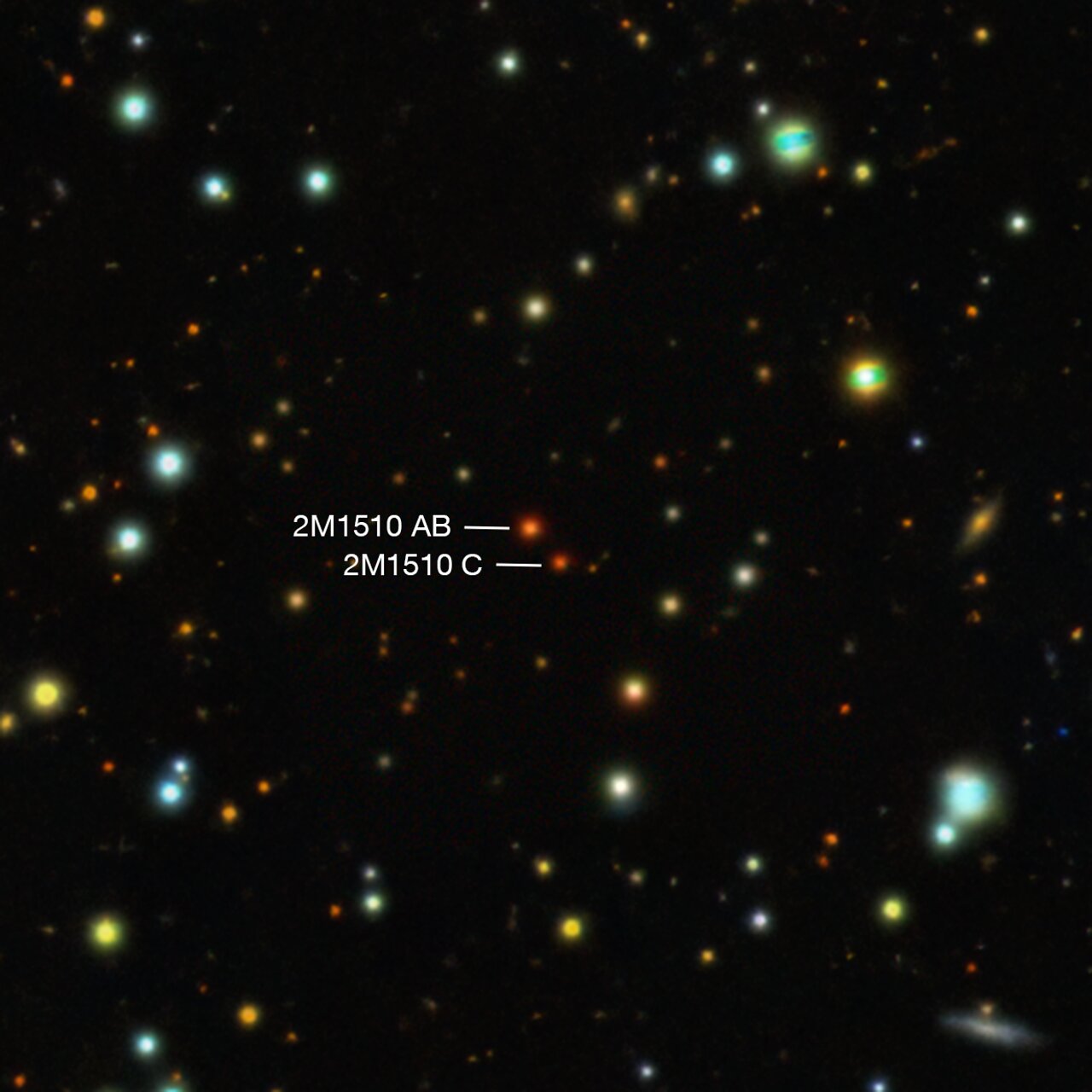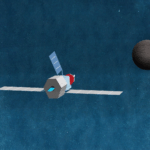Now Reading: Rare Tatooine world has a weird orbit around brown dwarfs
-
01
Rare Tatooine world has a weird orbit around brown dwarfs
Rare Tatooine world has a weird orbit around brown dwarfs
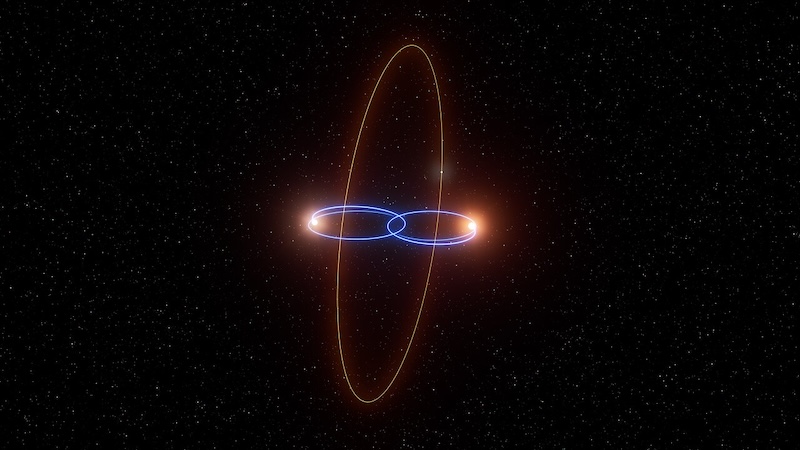
Strange Tatooine world: A planet in a perpendicular orbit around 2 brown dwarfs. Video via ESO.
Science matters. Wonder matters. You matter.
Join our 2025 Donation Campaign today.
- Tatooine exoplanets are planets that orbit two or more stars. They are reminiscent of the fictional planet Tatooine in “Star Wars.”
- They can also orbit brown dwarfs. Brown dwarfs are unusual objects that are larger than planets but smaller than stars. Astronomers have discovered a new exoplanet orbiting a pair of brown dwarfs.
- But this planet has a weird orbit. It orbits perpendicularly, at a 90 degree angle, to the orbits of the 2 brown dwarfs. It’s the first system of its kind that astronomers have found.
Rare Tatooine world has a weird orbit
Just like Tatooine in “Star Wars,” exoplanets can sometimes orbit two or more stars at once. Now, using the Very Large Telescope (VLT) in Chile, astronomers in Europe have found another such system, but this one’s a little different. Instead of two regular stars, the planet orbits a pair of brown dwarfs, objects that are larger than planets but smaller than stars. But there’s another twist. On April 16, 2025, the researchers said the orbit of the planet is perpendicular, at 90 degrees, to the orbits of the two brown dwarfs. Astronomers have seen hints of this kind of orbit before, but this is the first confirmation of this kind of unique planetary system.
The research team published their new peer-reviewed findings in Science Advances on April 16, 2025.
Eclipsing brown dwarfs
The astronomers discovered the exoplanet – named 2M1510 (AB) b – orbiting two binary brown dwarfs, known as 2M1510. Brown dwarfs are unusual objects, larger than planets but smaller than stars. And as is often the case, these two brown dwarfs are a binary pair. That means they orbit each other, similar to binary stars. But these are also eclipsing brown dwarfs, which are more rare. In fact, this is only the second eclipsing brown dwarf system astronomers have found so far. The orbits of the two brown dwarfs happen to be aligned so that they eclipse each other as seen from Earth. Astronomers call this an eclipsing binary.

A Tatooine world, with a twist
This makes the system interesting on its own, but there’s more. The planet itself orbits both brown dwarfs in a larger orbit. Indeed, astronomers have found several other systems like this, where the planet is orbiting a binary pair of stars. Such planets are reminiscent of the fictional world Tatooine in “Star Wars.”
Those planets, however, orbit their stars on the same plane that the two stars orbit each other. But 2M1510 (AB) b is an oddball. Its orbit is perpendicular, at 90 degrees, to the orbits of the two brown dwarfs. Scientists call this a polar orbit. Astronomers have found hints of such polar orbits around binary stars before, but this is the first confirmation that this kind of system actually exists. It’s the first exoplanet discovered that orbits at right angles to its two host stars (or brown dwarfs). And the fact that this orbit is around two brown dwarfs instead of two regular stars makes it all the more interesting.
Thomas Baycroft is a Ph.D. student at the University of Birmingham, U.K., and the lead author of the new paper. He said:
I am particularly excited to be involved in detecting credible evidence that this configuration exists.
Co-author Amaury Triaud at the University of Birmingham added:
A planet orbiting not just a binary, but a binary brown dwarf, as well as being on a polar orbit is rather incredible and exciting.


A serendipitous discovery
The astronomers made the discovery using the Ultraviolet and Visual Echelle Spectrograph (UVES) instrument on the Very Large Telescope at the Paranal Observatory in Chile. They noticed that something was “pushing and pulling” the two brown dwarfs in an unexpected way. The researchers tested various scenarios for what might be affecting the brown dwarfs. They came to the conclusion it must be a planet tugging at the brown dwarfs with its gravity, but the planet must be in an orbit at a right angle to the orbits of the brown dwarfs. Baycroft said:
We reviewed all possible scenarios, and the only one consistent with the data is if a planet is on a polar orbit about this binary.
He added:
We had hints that planets on perpendicular orbits around binary stars could exist, but until now we lacked clear evidence of this type of polar planet. We reviewed all possible scenarios, and the only one consistent with the data is if a planet is on a polar orbit about this binary.
The discovery was a surprise for the scientists, as Triaud noted:
The discovery was serendipitous, in the sense that our observations were not collected to seek such a planet or orbital configuration. As such, it is a big surprise. Overall, I think this shows to us astronomers, but also to the public at large, what is possible in the fascinating universe we inhabit.
Bottom line: Astronomers have discovered a Tatooine-like world orbiting two brown dwarfs. But strangely, the planet orbits the brown dwarfs at a 90 degree angle.
Source: Evidence for a polar circumbinary exoplanet orbiting a pair of eclipsing brown dwarfs
Read more: Tatooine exoplanets may be more habitable than we thought
Read more: After 29 years, first-known brown dwarf revealed as twins
The post Rare Tatooine world has a weird orbit around brown dwarfs first appeared on EarthSky.
Stay Informed With the Latest & Most Important News
Previous Post
Next Post
-
 012024 in Review: Highlights from NASA in Silicon Valley
012024 in Review: Highlights from NASA in Silicon Valley -
 02Panasonic Leica Summilux DG 15mm f/1.7 ASPH review
02Panasonic Leica Summilux DG 15mm f/1.7 ASPH review -
 03How New NASA, India Earth Satellite NISAR Will See Earth
03How New NASA, India Earth Satellite NISAR Will See Earth -
 04And Thus Begins A New Year For Life On Earth
04And Thus Begins A New Year For Life On Earth -
 05Astronomy Activation Ambassadors: A New Era
05Astronomy Activation Ambassadors: A New Era -
06SpaceX launch surge helps set new global launch record in 2024
-
 07Space Force plans new ‘Futures Command’ amid pressure to speed up modernization
07Space Force plans new ‘Futures Command’ amid pressure to speed up modernization












